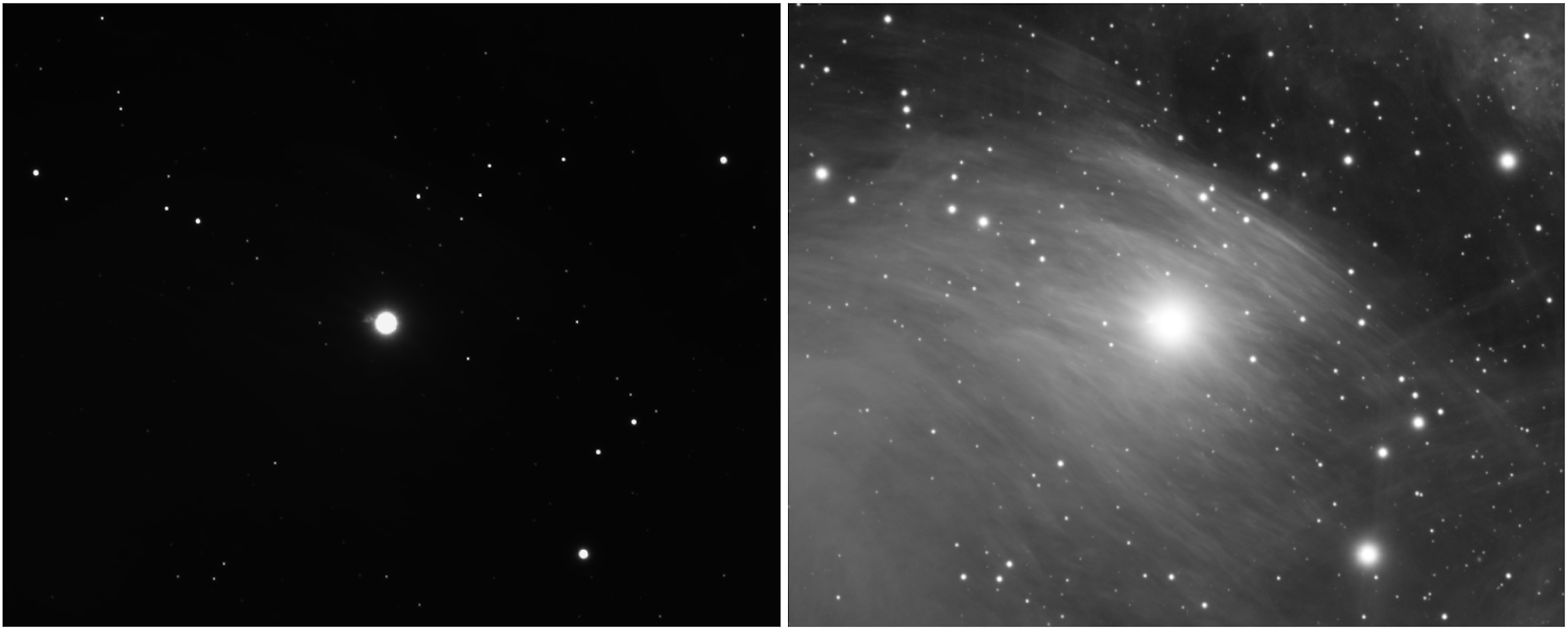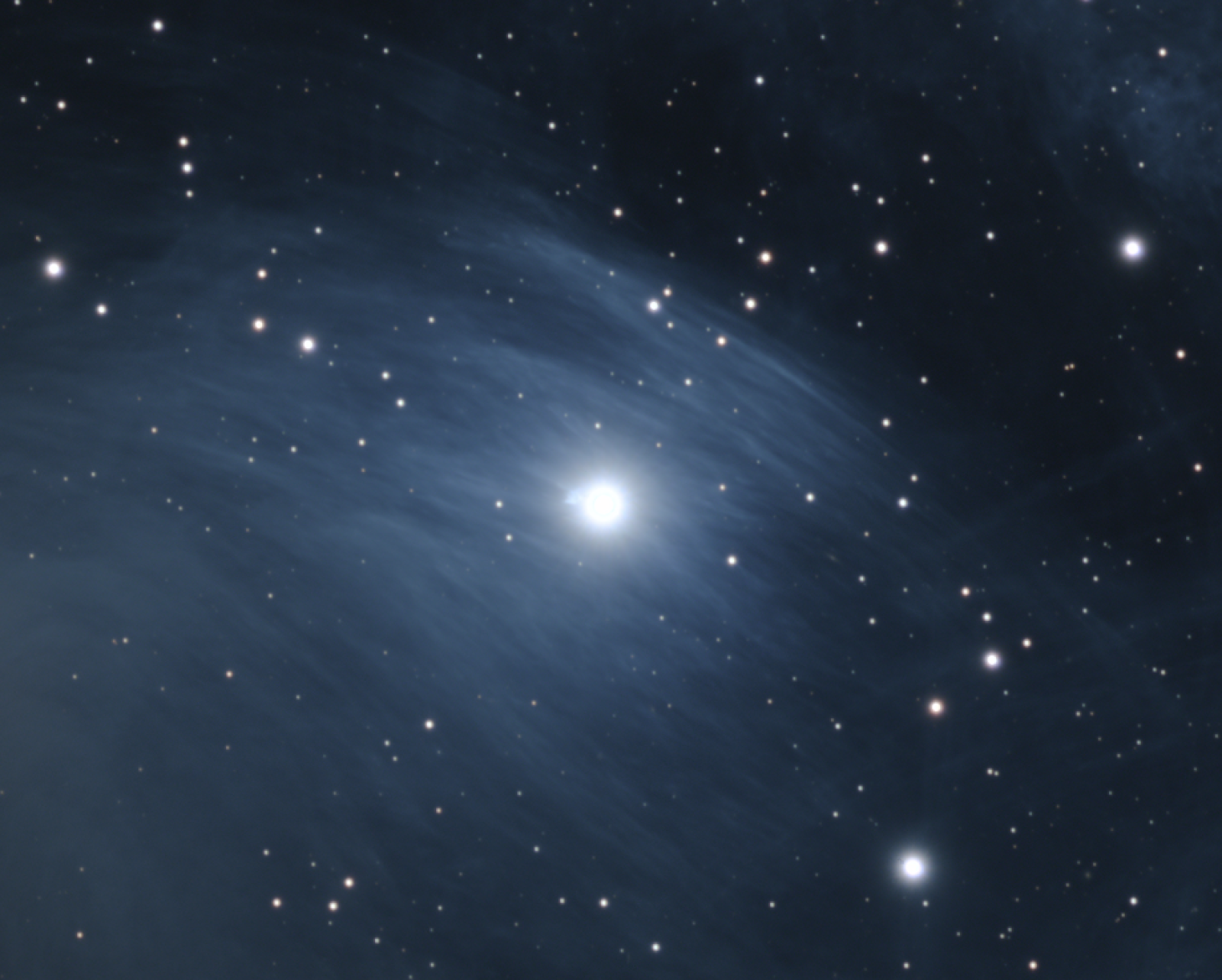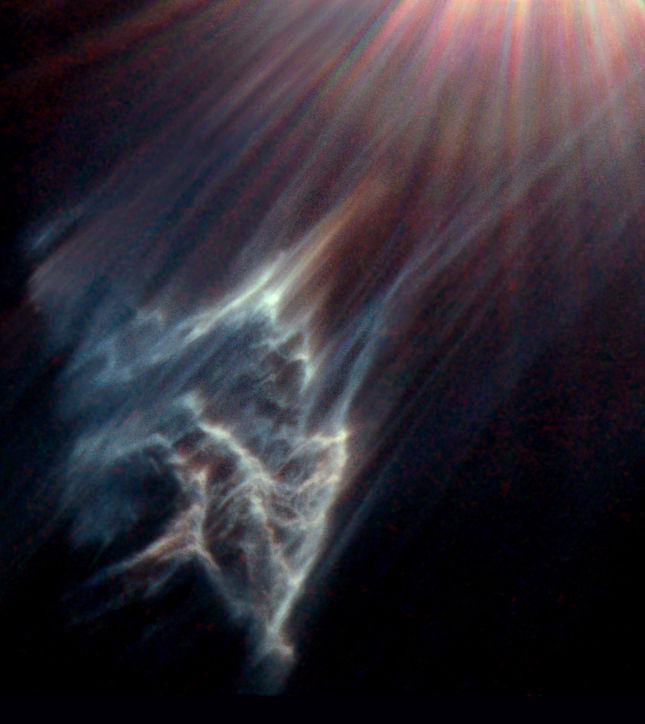By Jett Peters
Odds are you did not know this nebula existed, but if you are an astrophotographer, you have probably imaged it! This nebula is known as IC 349 or the Barnard’s Merope Nebula. It is tiny on the scale of the objects we typically image (around 30 arcseconds in apparent diameter), but it is a very interesting object that illustrates how impressive space telescopes like Hubble truly are.
IC 349 is a reflection nebula located within the well-known Pleiades star cluster. If you have imaged the Pleiades, you have captured this nebula, but you likely did not notice it. It is so close to the star Merope, that it is likely completely obscured when you stretch your image. The nebula does not only appear to be close to Merope, but it’s actually very close physically. IC 349 only lies 3,500 AU from Merope. An AU is defined as the average distance between the Earth and the Sun, and while 3,500 times this distance might seem like a lot, it is very small in a cosmic scale. For example, the Pillars of Creation in the Eagle Nebula are about 5 light-years tall, this translates to well over 300,000 AU. This physical separation is one of the reasons the nebula is so bright compared to the surrounding nebulosity. Reflection nebulae are clouds of dust and gas that are illuminated by surrounding stars. There is very little to no ionization in these clouds. The intense radiation from Merope significantly influences IC 349. The nebula is actually drifting in the direction of the star, and, as it does, radiation pressure decelerates the dust particles within it. Smaller particles are more affected by this radiation, and are slowed more than larger ones, leading to a sifting effect that creates parallel wisps pointing toward Merope.
IC 349 was discovered by E. E. Barnard in 1890. It was visually discovered using the 36-inch telescope at the Lick Observatory in California. But you certainly don’t need a telescope of that size to notice this bright wisp. Below are views from my 100 mm refractor from UDRO. As you can see, the nebula is clearly visible in the linear image, but stretching the image almost completely obscures it.

By combining our LRGB we can see that the color of the nebula is similar to the background M45 nebulosity, but a bit lighter in color and much brighter as shown in the image below.

To see the full extent of this object, Hubble imaged it in September of 1999, publishing the following image. In this image, you can clearly see the vertical lines caused by radiation pressure, and the true detail of IC 349 is revealed. While we are able to image the nebula with our amateur-level equipment on Earth, this image truly illustrates the power of Hubble and other space-based telescopes.

Credit: https://en.wikipedia.org/wiki/IC_349#/media/File:Reflection_nebula_IC_349_near_Merope.jpg
